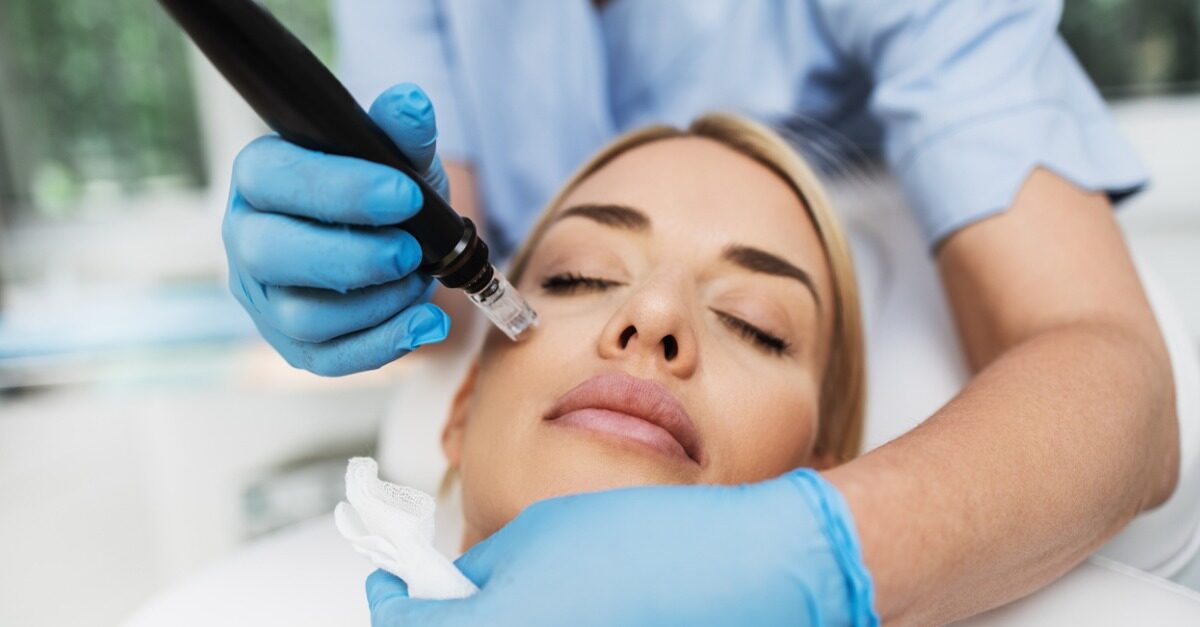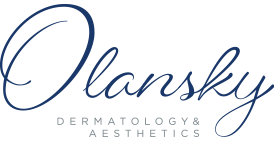You may have heard infamous rumors about the PRP facial, popularized by celebrities like Kim Kardashian West. The process has been covered over the last few years across social media and well-known sources such as Vox, The Rolling Stone, and Allure.
Turns out, as reported both by the American Academy of Dermatology Association and Harvard Health, the PRP facial has its roots in sports medicine and orthopedic surgery as a method that soothes injuries and helps them recover faster. It’s also potentially a powerful treatment for a variety of skin concerns.
The Foundation: Microneedling
In general, the PRP facial is a microneedling procedure — with an added bonus. Basic microneedling involves a special roller or device that uses tiny needles which prick the skin, stimulating both its natural healing process and new collagen production. This is why microneedling is also sometimes referred to as collagen induction therapy or percutaneous collagen induction.
What Does Microneedling Treat?
Primarily, microneedling is used to minimize the signs of aging, such as:
- Wrinkles
- Fine lines
- Age spots
- Acne scars
- Sun damage
- Enlarged pores
- Certain forms of hyperpigmentation
The process can also improve your skin’s overall tone, texture, and appearance.
For those who may be pregnant, have a history of poor wound healing, or have facial eczema or rosacea — be sure to talk to your skincare professional about whether the procedure will be right for you.
So Why Add PRP?
The addition of PRP theoretically helps to promote even more collagen production.
“The idea behind blood facials,” wrote Popular Science in 2013, “is that they infuse the skin with platelets, which contain growth factors, which in turn are known to be helpful in wound healing. Practitioners of related injections say the growth factors may stimulate new collagen growth in the face.”
In an article featuring Joshua Zeichner, the director of cosmetic and clinical research in dermatology at Mount Sinai Hospital in New York City, Allure magazine also summarized the process this way: “Platelets are rich in growth factors, which essentially act as energy [boosts] for our skin. This helps our skin function optimally, increasing everything from collagen to elastin, while also bringing antioxidant and hydrating properties.”
Where Does the PRP Come From, and What’s the Actual Process?
Don’t worry — despite the gory nickname the process is sometimes known by, this facial doesn’t require you sucking anyone’s blood. Instead, platelets from your own blood are extracted after a small draw prior to the procedure. This greatly reduces the chances of any complications or cross-infection.
The microneedling portion of the process is relatively quick compared to other treatments — typically taking about 30 minutes. This allows your clinician plenty of time to centrifugate your blood sample into PRP.
After the microneedling is complete, your clinician will massage your PRP into the treated areas of your skin. The holes caused by microneedling allow the platelets and growth factors in PRP to penetrate deeply.
In the final stage, a balm or salve may be applied to your face to reduce redness and irritation.
“Recovery for this procedure is relatively minimal,” Healthline reports. “You can go back to school or work the next day if you wish.”
To give your skin time to fully heal, you’ll want to avoid harsh skin products, harmful sun, or excessive sweating for a few days after the procedure, but overall it is well tolerated in most adults. Common side effects for a couple of days may involve mild bruising, redness, or other signs of irritation.
Have more questions about the PRP facial procedure, and whether it’s right for you? Our experts are here to address all of your skin concerns. Schedule an appointment with Olansky Aesthetics online or call us at (404) 355-5484.


